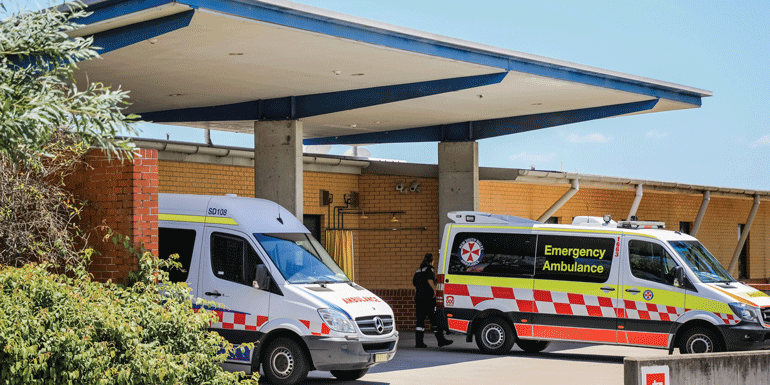How can households adapt?
Adapting to climate change involves making small changes in our everyday lives, to manage the risks that climate change presents, and harness potential opportunities to become more resilient.
The specific steps we take to adapt to climate change depend on our household circumstances, where we live, and our exposure to climate risks such bushfire, floods, droughts, and heatwaves. Regardless of our circumstances, there are practical steps we can take to adapt and increase our resilience.
Knowing and understanding how climate change impacts your region, household, and important natural places is key to adaptation.
Adaptation involves becoming more resilient to climate change events through effective preparation, response and recovery. For example, if your home is located in a bushfire‑prone area, being prepared and having a bushfire survival plan is a good adaptation strategy and will help you recover faster.
Depending on where you live there are several climate risk assessment tools that you can use, such as Climate Wise Communities for Kur-ing-ai Council in Sydney or the Get Ready for Disasters Kit for the Hunter. Check your local council's website for specific information.
Other resources include Get Ready Storms from the NSW State Emergency Service and Get Ready Bushfires from the NSW Rural Fire Service. The Red Cross also has resources to help you prepare for disasters.
It's important to find out about any climate risks before you rent or purchase a house, and to make sure you are appropriately insured. Flood maps for local government areas can be found on the NSW Flood Data Portal. Maps of projected coastal inundation caused by sea level rise is available at Coastal Risk Australia.
Modifying your home and assets can help build household resilience to climate change.
Renovations
Renovating or modifying your house is a great way to improve its efficiency and resilience to the effects of climate change. Passive design principles use the natural environment to maximise the home's cooling and heating ability. Both small changes (such as window coverings, plants and extra insulation), and large changes (such as double glazing or increased thermal mass), can increase the energy efficiency and comfort of your home and reduce the effects of climate extremes. You can also make modifications to cope with varying rainfall patterns, such as adding a water tank and changing appliances to be more water efficient.
The green rebuild toolkit has information for re-building in bushfire-prone areas.
Rural properties
People on rural properties can consider several different adaptation actions. These involve understanding how to maximise the effectiveness of land use to improve resilience. Removing weeds, planting native vegetation and reducing the impact of livestock are all excellent initiatives to increase the land’s resilience to climate impacts. It's also important to know how to keep your animals safe during an emergency.
Local Land Services and the Department of Primary Industries are key NSW Government agencies who can support you with this process.
Your assets
Consider all of your assets that could be impacted by climate change – your investment properties, superannuation, your business or your savings portfolio. For more information, visit our impacts of climate change on the economy and large business pages.
It's also important to look at your insurance coverage and make sure you're covered for the vulnerabilities you're most likely to experience, such as bushfires or floods. Many people who lost their homes in the 2019–20 bushfires were underinsured, which made rebuilding very difficult.
Climate change, and the challenges it brings, can impact our health and wellbeing.
Physical and mental health
Various resources are available to help you understand the impacts of climate change on your health and wellbeing.
NSW Health has information on bushfires as well as extreme heat and heatwaves. You can also visit the NSW Government’s air quality index to determine when extreme heat days or hazardous smoke might impact you.
Climate change has many impacts on our mental health. The Australian Psychological Society has resources to help you and your family prepare for and adapt to climate change.
There are many benefits to spending time in nature, such as providing areas for recreational activities, and opportunities to connect with places and personal identity. These activities support our mental health and help us become more resilient to a changing climate. There are simple ways that this can be achieved. From walking the dog to heading out for a bushwalk or camping trip in a NSW National Park.
Protecting our natural environments from the impacts of climate change benefits our health and wellbeing, as well as the environment. For more information visit our community group page and find a local environmental protection or regeneration group operating in your local area.
Community connection
Your community is a valuable source of local knowledge and support when you need it. Connecting with the local community and building knowledge through networks helps adaptation strategies to be implemented, and helps prepare for climate impacts.
A strong community connection builds knowledge, support and resilience. Groups such as Landcare or Surf Life Saving are good ways of getting to know your area and meeting like-minded community members. Specific adaptation information for community groups can be found on our NSW community groups and climate change page.
Getting to know your neighbours is a great way of sharing responsibility, looking out for each other and improving overall mental wellbeing. They're the closest people to you to help manage an emergency. A good way to connect is to have a street party or street garage sale.
Join an adaptation and disaster preparedness group to increase your knowledge of the local area and understand the actions you could take to reduce the impacts of specific climate events. A good example of one of these organisations is Resilient Byron.
Starting a community group
If you and other members of your community have identified an environmental or climate change cause, or have a shared interest in this area, you may wonder how to start a community group or association.
It’s a great idea to assess the need for a new community group in your area first and understand the existing community assets and resources that your group may be able to access. Make use of the checklist and guides provided to get started.
Any group can be registered as an Incorporated Association, making it a legal entity separate from its individual members. Incorporated Associations are small, not-for-profit groups (with a minimum of 5 members). Visit the NSW Department of Fair Trading to find out how to register a new community group or association in NSW. Once you have started your group, visit our community grants page for further information.
Now is the time to consider the vulnerability of your household to climate change. Making the necessary changes today will prepare you for the future.
Related resources
Bushfire-resilient housing toolkit (2021) - Canberra Joint Organisation
Your resilient home guide - ACT Government
Flood Resilient Building Guidance for Queensland Homes - Queensland Government
Your Home - Australia's guide to environmentally sustainable homes
Tents to castles: building energy efficient cos-saving aussie homes - Climate Council
Get Ready for storms - NSW State Emergency Service
Get ready for bushfires - NSW Rural Fire Service
Australian Psychological Society resources for Climate Change
Australian Red Cross resources
Built for comfort program - Camden Council
Natural Disasters and Severe Weather - NSW Health
Be prepared this summer - NSW Customer Service
Disaster Preparedness Hub - Carers NSW
Case studies

Monash University's Climate Change Communication Research Hub applied NARCliM regional climate projections to visualise the projected increase in average summer temperatures across Australia's local government areas.

Dr Ivan Hanigan leads a team of researchers investigating the impact of climate change on health in Australia using NARCliM regional climate projections. Their work looks at the future heat island effect in Australian cities, including the likely number of deaths caused by future heatwaves in Sydney.

The CRJO and its partners created the Bushfire-Resilient Housing Toolkit to reframe bushfire risk to help prepare and build more resilient communities.
